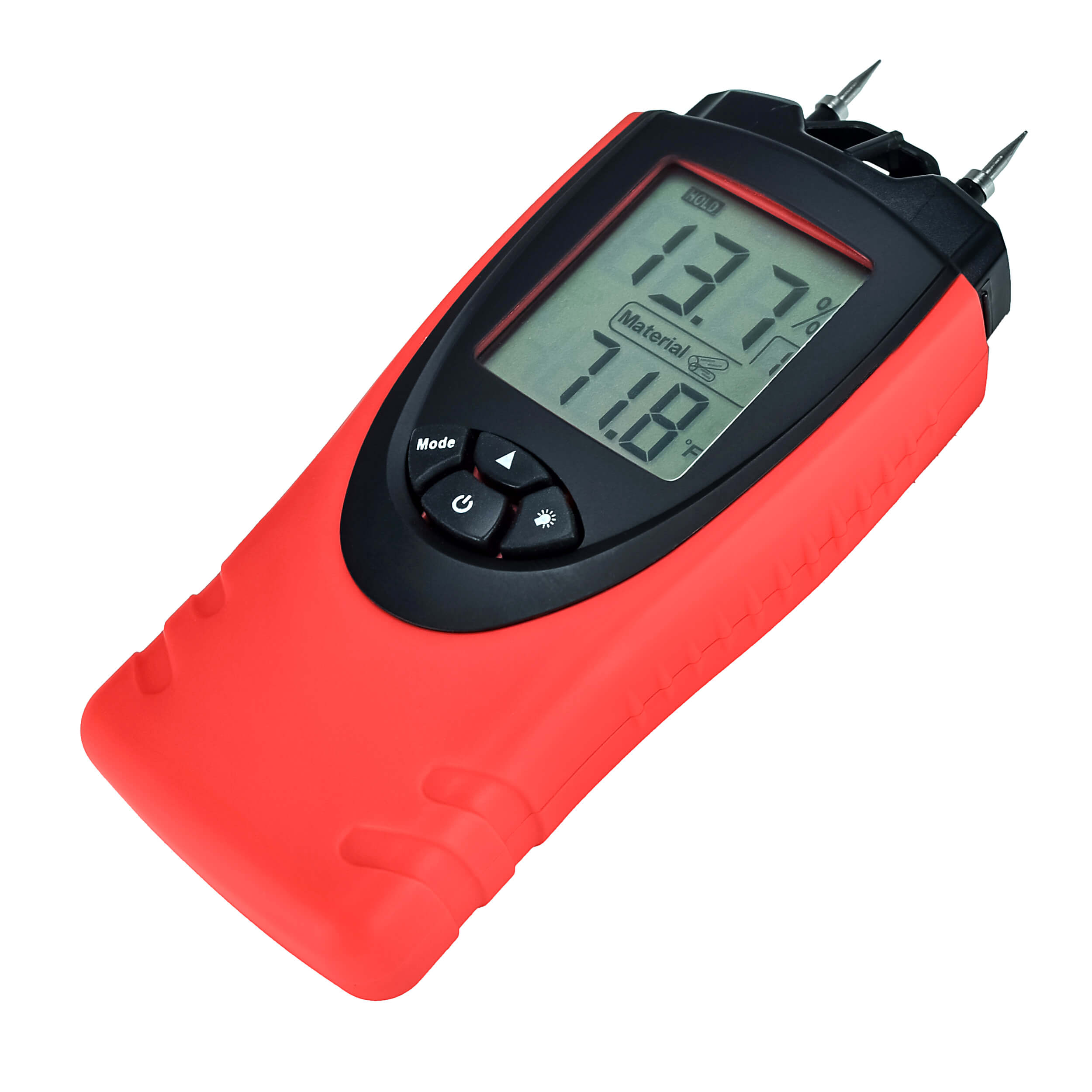Just how to Use a Moisture Meter to Identify Covert Water Damages in Your Property
Just how to Use a Moisture Meter to Identify Covert Water Damages in Your Property
Blog Article
The Ultimate Guide to Moisture Meters: A Comprehensive Introduction and Exactly How They Can Save You Cash
In the world of structure maintenance, building and construction, and numerous industries, the value of properly determining wetness degrees can not be overstated. Dampness meters function as indispensable tools in detecting and keeping track of moisture web content in materials, assisting in preventing expensive problems and making sure the high quality of items. Comprehending the subtleties of different kinds of moisture meters, their applications, and the prospective cost-saving benefits they supply can be a game-changer for companies and specialists alike. Discovering just how these devices can not just enhance processes yet additionally add to economic cost savings is a journey worth starting.
Kinds Of Moisture Meters
One typical kind is the pin-type dampness meter, which measures the electric resistance between two pins inserted into a material. Pinless dampness meters, on the other hand, usage electro-magnetic sensor plates to check a bigger area without creating damage to the material's surface.
Infrared dampness meters gauge the thermal properties of a material to determine its dampness web content non-invasively, making them helpful for applications where pin or pinless meters might not be suitable. Understanding the different types of dampness meters available can aid sectors pick the most ideal tool for their specific dampness measurement requirements.

Benefits of Using Moisture Meters

In addition, making use of wetness meters can lead to boosted energy effectiveness. In agricultural setups, wetness meters play a critical function in optimizing plant returns by enabling farmers to monitor dirt wetness degrees and make informed watering choices.
Exactly How to Choose the Right Moisture Meter
Picking the suitable dampness meter involves considering key variables such as product compatibility, dimension variety, and calibration precision. When selecting a dampness meter, it's vital to make sure that the meter is suitable for the certain product you will certainly be testing. Various products have varying electrical properties that can impact moisture readings, so choosing a meter created for your material is crucial for precise results. In addition, consider the measurement variety of the moisture meter. my blog Make certain that the meter can detect moisture levels within the variety needed for your applications. Calibration accuracy is another crucial aspect to keep in mind (Moisture Meter). Go with a moisture meter with reputable calibration to make sure specific and consistent analyses. Some meters may need regular calibration adjustments, so comprehending the calibration procedure is very important. By carefully examining these elements, you can pick a moisture meter that meets your requirements and gives exact wetness dimensions for your jobs.
Proper Techniques for Moisture Meter Use
To ensure exact dampness analyses and maximize the efficiency of a wetness meter, utilizing proper techniques is essential. When using a pin-type moisture meter, place the pins or probes into the product being tested till they make full contact. Ensure the pins are vertical to the surface to obtain one have a peek here of the most exact analysis. For pinless moisture meters, hold the gadget level against the product and relocate gradually to cover the whole area for an average analysis. It's important to calibrate the dampness meter according to the product being evaluated to improve precision. Take multiple readings across the surface area and average them out for a much more reputable outcome. In addition, make certain that the material being checked is acclimated to the setting to stop skewed readings. Routine maintenance of the wetness meter, such as cleansing the pins or sensor, is also important to ensure consistent and exact readings. By following these proper methods, customers can depend on their dampness meter to provide trustworthy dampness degrees, aiding in stopping costly damages or making certain quality in numerous applications.

Expense Financial Savings With Moisture Meter Applications
How can the critical home use of wetness meters lead to significant price financial savings throughout numerous industries? In the farming sector, wetness meters aid in figuring out the optimal time for harvesting plants, avoiding excess or over-drying dampness that can affect the last product's quality.

Moreover, in the food handling market, moisture meters are crucial for monitoring item top quality and making sure compliance with safety policies. By properly gauging moisture content in food, makers can prevent perishing, maintain freshness, and decrease waste, leading to substantial expense savings. In general, the critical application of wetness meters is a valuable financial investment that can result in significant price decreases and enhanced effectiveness across numerous markets.
Verdict
In verdict, wetness meters are important devices for gauging and finding wetness levels in different products. By making use of the ideal moisture meter and following appropriate strategies, users can efficiently protect against pricey problems triggered by excess wetness.
Wetness meters offer as vital devices in spotting and checking moisture material in materials, helping in protecting against pricey problems and making sure the top quality of items. Infrared moisture meters determine the thermal buildings of a material to determine its moisture material non-invasively, making them beneficial for applications where pin or pinless meters may not be appropriate.Dampness meters provide indispensable advantages in properly evaluating and monitoring wetness levels in diverse products and environments. In agricultural settings, dampness meters play a critical function in optimizing plant returns by enabling farmers to monitor soil moisture degrees and make informed irrigation choices.In conclusion, wetness meters are beneficial devices for identifying and gauging moisture levels in numerous products.
Report this page